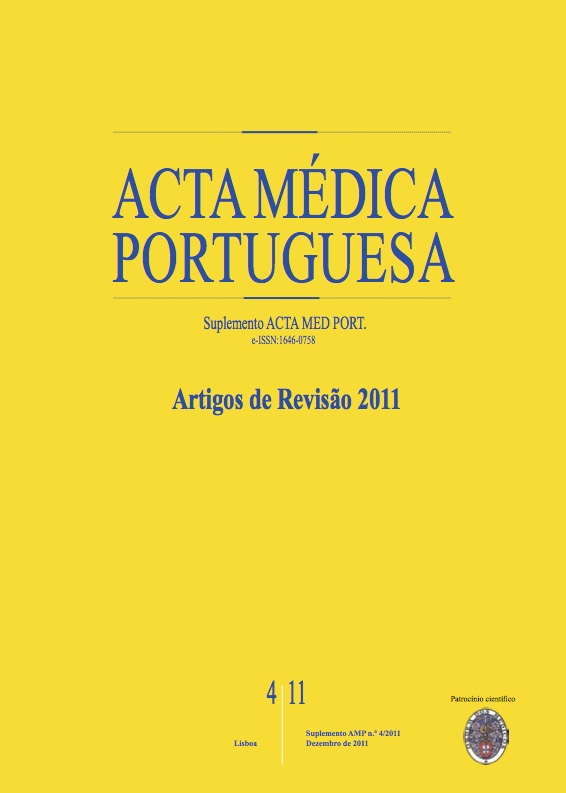Mutação do gene BRAF na história natural do carcinoma papilar da tireóide: implicações diagnósticas e prognósticas.
DOI:
https://doi.org/10.20344/amp.1585Resumo
The papillary carcinoma is the most prevalent malignant neoplasm of the thyroid gland, representing 85-90% of all cases, and its incidence has been increasing in recent years. It is relatively indolent, however other types poorly differentiated or anaplastic, are more aggressive and usually associated with poor prognosis. Approximately half of these papillary carcinomas harbor a thymine-to-adenine transversion (T1799A) point mutation, in the gene encoding the serine/threonine-kinase B-type Raf kinase (BRAF), with substitution of valine by glutamate (V600E). Mutated BRAF, generates a constitutive activation of the mitogen-activated protein kinases (MAPK) signaling pathway, which plays a critical role in transmitting proliferative signals generated by cell surface receptors and cytoplasmic signaling elements, to the nucleus. BRAF mutation is mutually exclusive with other common genetic alterations, supporting its independent oncogenic role in cell proliferation, survival and tumor de-differentiation. The BRAFV600E occurs exclusively in papillary thyroid carcinoma and papillary carcinoma-derived anaplastic cancer, rising as a specific diagnostic marker for this tumor when identified in cytological / histological exams. This mutation has recently emerged, as a potential prognostic marker for papillary thyroid carcinoma, after several studies have found this mutation to be associated with some clinicopathological characteristics, known to predict tumor recurrence and progression, including, for instance, old patient age, extrathyroidal invasion and lymph node metastasis. It is therefore considered a marker of aggressive disease in these tumors, associated with increased cancer recurrence and even loss of radioiodine avidity. Several studies were not able to confirm these associations. It has become clearer that BRAF mutation will likely have significant impact on the clinical management of papillary thyroid carcinoma.Downloads
Downloads
Como Citar
Edição
Secção
Licença
Todos os artigos publicados na AMP são de acesso aberto e cumprem os requisitos das agências de financiamento ou instituições académicas. Relativamente à utilização por terceiros a AMP rege-se pelos termos da licença Creative Commons ‘Atribuição – Uso Não-Comercial – (CC-BY-NC)’.
É da responsabilidade do autor obter permissão para reproduzir figuras, tabelas, etc., de outras publicações. Após a aceitação de um artigo, os autores serão convidados a preencher uma “Declaração de Responsabilidade Autoral e Partilha de Direitos de Autor “(http://www.actamedicaportuguesa.com/info/AMP-NormasPublicacao.pdf) e a “Declaração de Potenciais Conflitos de Interesse” (http://www.icmje.org/conflicts-of-interest) do ICMJE. Será enviado um e-mail ao autor correspondente, confirmando a receção do manuscrito.
Após a publicação, os autores ficam autorizados a disponibilizar os seus artigos em repositórios das suas instituições de origem, desde que mencionem sempre onde foram publicados e de acordo com a licença Creative Commons









